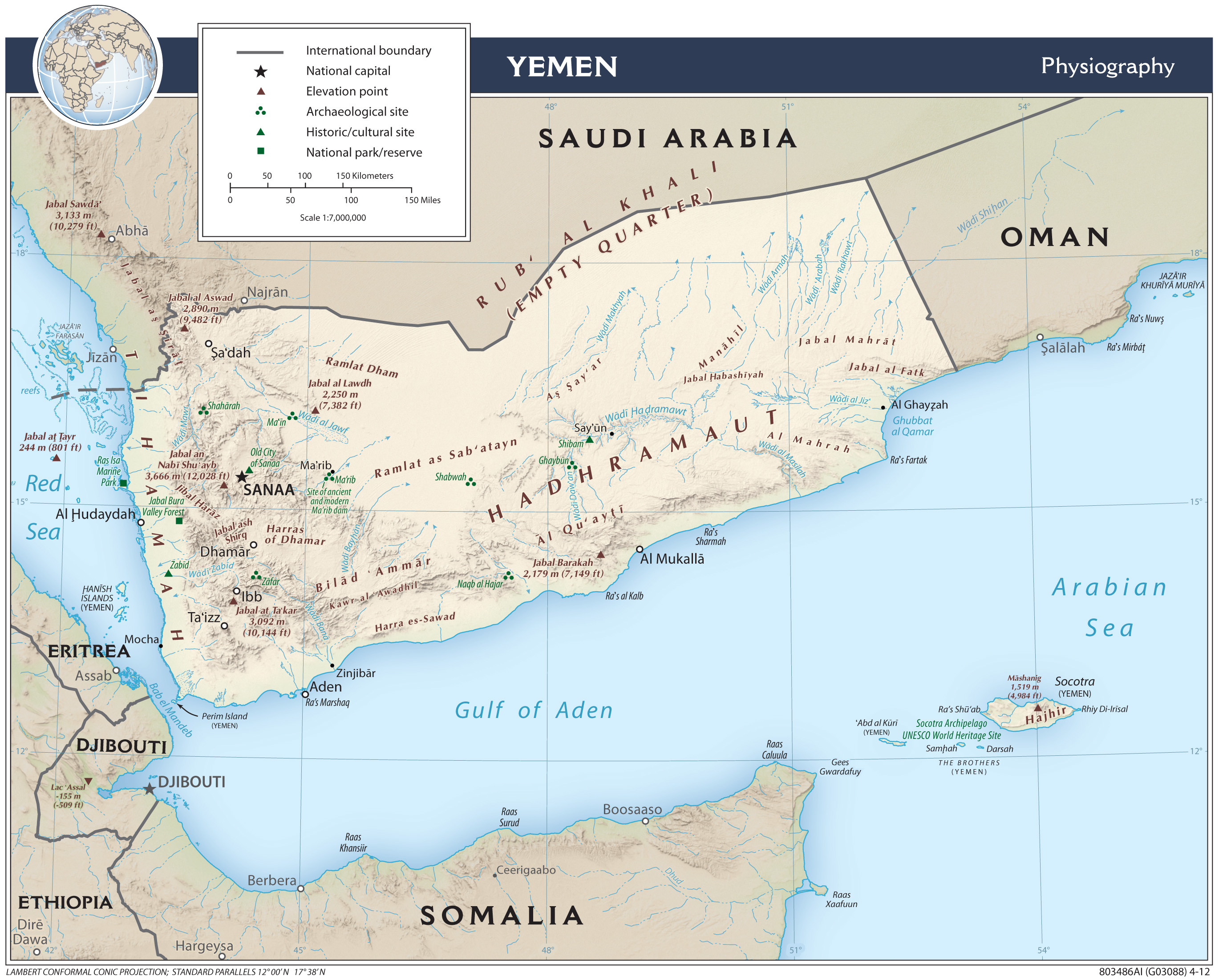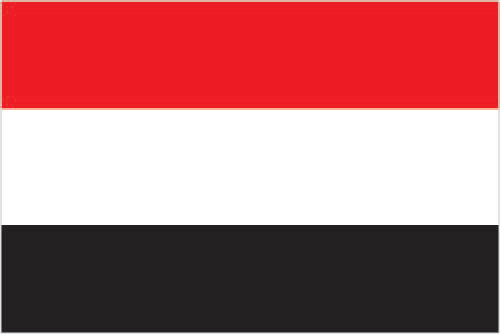| Area Total | 527,968 sq km |
| Climate | mostly desert; hot and humid along west coast; temperate in western mountains affected by seasonal monsoon; extraordinarily hot, dry, harsh desert in east |
| Natural Resources | petroleum, fish, rock salt, marble; small deposits of coal, gold, lead, nickel, and copper; fertile soil in west |
| Imports | $4.079 billion (2017 est.) partners: UAE 12.2%, China 12.1%, Turkey 8.7%, Brazil 7.3%, Saudi Arabia 6.5%, Argentina 5.5%, India 4.7% (2017) – food and live animals, machinery and equipment, chemicals |
| Exports | $384.5 million (2017 est.) partners: Egypt 29.4%, Thailand 16.7%, Belarus 13.5%, Oman 10.5%, UAE 6.5%, Saudi Arabia 5% (2017) -crude oil, coffee, dried and salted fish, liquefied natural gas |
| Government | in transition |
| Capital | Sanaa |
| Population | 28.7 million (July 2018 est.) |
| Ethnicity | predominantly Arab; but also Afro-Arab, South Asian, European |
| Language | Arabic (official); note: a distinct Socotri language is widely used on Socotra Island and Archipelago; Mahri is still fairly widely spoken in eastern Yemen |
Yemen occupies the southwest corner of the Arabian peninsula. Saudi Arabia is to its north and Oman to the east.
Within Yemen, there has traditionally been a divide between north and south. The country has only been unified since 1990. Since 2011, a civil war has been going on between the Houthis in the south and the government forces in the north. Saudi Arabia has been participating on the side of the government.
Although Yemen is poor, it has many places of historical and archaeological significance. The Queen of Sheba is said to have reigned there in ancient times.


